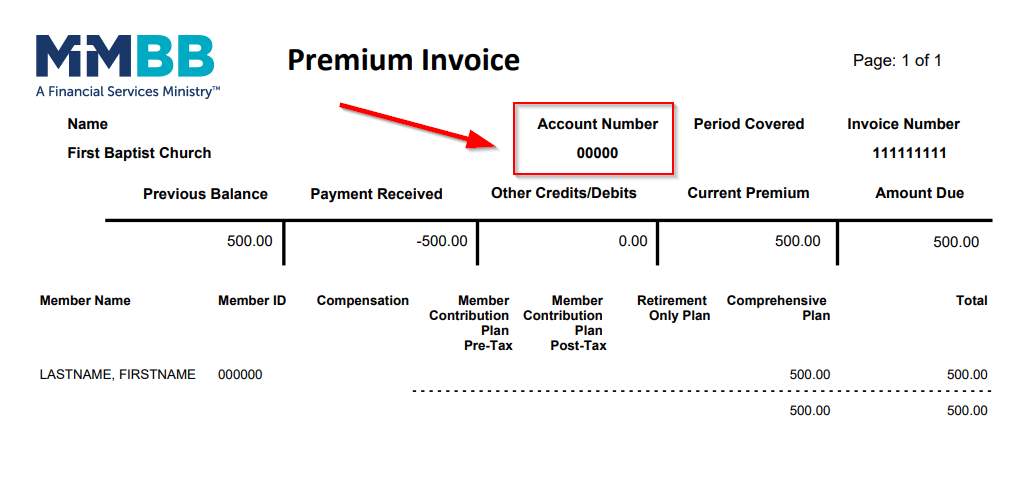The Markets (as of market close January 31, 2022)
Stocks ended November generally lower, with only the Nasdaq able to eke out a gain. The Global Dow and the Russell 2000 each lost more than 4.25%. The Dow fell 3.7% and the S&P 500 dropped 0.8%. The Nasdaq gained 0.3%.
Despite some positive economic news, global and domestic markets were sent reeling in November following reports of a new coronavirus strain. The Omicron variant, first discovered in South Africa, prompted several countries, including the United States, to impose travel restrictions. Federal Reserve Chair Jerome Powell indicated that the coronavirus variant could hinder economic recovery efforts and impact the country's response to surging inflation. Nevertheless, Powell also suggested that the central bank could end its asset purchase program a few months sooner than planned, apparently signaling confidence in the economic recovery, despite concerns over the Omicron variant. Inflation continued to rise, as supply-chain bottlenecks and labor shortages prompted price hikes at both the manufacturing and retail levels.
The Omicron variant also impacted crude oil prices, driving them to the biggest monthly loss since early 2020. Prior to news of the variant, several countries, including the United States, responded to rising oil prices by planning to release several million barrels of oil from strategic reserves. Bond prices rose in anticipation of rising interest rates, sending yields lower, with 10-year Treasury yields falling 11 basis points to close the month at 1.44%.
There were some positive economic signs in November. Industrial production rose, while sales of new and existing homes increased. More than 500,000 new jobs were added, and weekly claims for unemployment insurance fell to their lowest level since 1969.
November saw the dollar climb higher, while gold prices dropped nearly 1.0%. Prices at the pump increased, as the national average retail price for regular gasoline was $3.395 per gallon on November 22, up from the October 25 price of $3.383 per gallon.
MARKET SUMMARY
| MARKET/INDEX |
2021 CLOSE |
PRIOR MONTH |
AS OF 01/31 |
MONTHLY CHANGE |
YTD CHANGE |
| DJIA |
36,338.30 |
36,338.30 |
35,131.86 |
-3.32% |
-3.32% |
| NASDAQ |
15,644.97 |
15,644.77 |
14,239.88 |
-8.98% |
-8.98% |
| S&P 500 |
4,766.18 |
4,766.18 |
4,515.55 |
-5.26% |
-5.26% |
| RUSSELL 2000 |
2,245.31 |
2,245.31 |
2,028.45 |
-9.66% |
-9.66% |
| GLOBAL DOW |
4,137.63 |
4,137.63 |
4,161.11 |
0.57% |
0.57% |
| FED. FUNDS |
0.00%-0.25% |
0.00%-0.25% |
0.00%-0.25% |
0 BPS |
0 BPS |
| 10-YEAR TREASURIES |
1.51% |
1.51% |
1.78% |
27 BPS |
27 BPS |
| US DOLLAR-DXY |
95.64 |
95.64 |
96.64 |
1.05% |
1.05% |
| CRUDE OIL-CL=F |
$75.44 |
$75.44 |
$88.33 |
17.09% |
17.09% |
| GOLD-GC=F |
$1,830.30 |
$1,830.30 |
$1,798.70 |
-1.73% |
-1.73% |
Chart reflects price changes, not total return. Because it does not include dividends or splits, it should not be used to benchmark performance of specific investments.
Latest Economic Reports
- Employment: Job growth slowed for the second consecutive month in December with the addition of 199,000 new jobs, well below the 2021 monthly average of 537,000. Employment has increased by 18.8 million since April 2020 but is down by 3.6 million, or 2.3%, from its pre-pandemic level in February 2020. The unemployment rate fell by 0.3 percentage point to 3.9%. The number of unemployed persons fell by 483,000 to 6.3 million. For 2021, the unemployment rate fell 2.8 percentage points and the number of unemployed persons dropped 4.5 million. While both measures are down considerably from their highs at the end of the February-April 2020 recession, they remain above their levels prior to the coronavirus pandemic (3.5% and 5.7 million, respectively, in February 2020). Among the unemployed, the number of workers who permanently lost their jobs declined by 202,000 to 1.7 million in December, although this is 408,000 higher than in February 2020. The labor force participation rate was unchanged at 61.9% in December but remains 1.5 percentage points lower than in February 2020. The employment-population ratio increased by 0.2 percentage point to 59.5% but is 1.7 percentage points below below its February 2020 level. In December, average hourly earnings increased by $0.19 to $31.31. For 2021, average hourly earnings rose by 4.7%. The average work week was unchanged at 34.7 hours in December.
- There were 260,000 initial claims for unemployment insurance for the week ended January 22. Over the course of 2021, initial weekly claims and total claims for unemployment insurance benefits steadily decreased on a monthly basis, with initial weekly claims hitting a low of 188,000 in early December. As of January 15, 2022, there were 1,675,000 total claims for unemployment benefits. For comparison, there were 4,878,000 total claims for unemployment insurance a year earlier.
- FOMC/interest rates: The Federal Open Market Committee met in January and agreed to continue to cut its asset purchase programs, bringing them to an end in early March. However, the Committee decided to keep the target range for the federal funds rate at 0.00%-0.25%. Nevertheless, the FOMC noted that with inflation well above 2.0% and a strong labor market, it will soon be appropriate to raise the target range for the federal funds rate.
- GDP/budget: Gross domestic product rose 6.9% in the fourth quarter of 2021 compared with a 2.3% advance in the third quarter. Consumer spending, as measured by personal consumption expenditures, climbed 3.3% in the fourth quarter (2.0% in the third quarter). The PCE price index, a measure of inflation, increased 6.5% in the fourth quarter after advancing 5.3% in the third quarter. For 2021, the PCE price index rose 3.9% compared with a 1.2% increase in 2020. Gross private domestic investment, which includes nonresidential and residential fixed investment, vaulted 32.0% in the fourth quarter after gaining 12.4% in the third quarter. Nonresidential (business) fixed investment increased 2.0% (1.7% in the third quarter), while residential fixed investment decreased 0.8% (-7.7% in the third quarter). Exports jumped 24.5% in the fourth quarter after falling 5.3% in the prior quarter. Imports climbed 17.7% following a 4.4% rise in the third quarter.
- December saw the federal budget deficit come in at $21.3 billion, down roughly $122.3 billion from December 2020. The deficit for the first three months of fiscal year 2022, at $377.7 billion, is $195.2 billion lower than the first three months of the previous fiscal year. Compared to the same period last fiscal year, government outlays rose $53.3 billion, while receipts increased $245.5 billion. Through the first three months of fiscal year 2022 compared to the same period last year, individual income taxes are up $188.4 billion, while corporate income taxes have risen $29.8 billion.
- Inflation/consumer spending: According to the latest Personal Income and Outlays report for December, personal income advanced 0.3% and disposable personal income rose 0.2% after increasing 0.5% and 0.4%, respectively, in November. Consumer spending declined 0.6% in December after increasing 0.4% the previous month. Consumer prices climbed 0.4% in December following a 0.6% gain
in November. Consumer prices rose 5.8% since December 2020.
- The Consumer Price Index climbed 0.5% in December after advancing 0.8% in November. In 2021, the CPI rose 7.0% — the largest 12-month gain since June 1982. Price growth was broad based, with most major categories showing an increase, led by used cars and trucks (3.5%) and apparel (1.7%). Prices for food rose 0.5% in December. Energy prices fell 0.4% in December, pulled lower by a 0.5% dip in gasoline prices and a 2.4% decrease in fuel oil prices. Nevertheless, for 2021, energy prices increased 29.3%, with gasoline prices climbing 49.6% and fuel oil prices rising 41.0%. Also of note in 2021, food prices rose 6.3%, new vehicle prices advanced 10.7%, and prices for used cars and trucks climbed 37.3%.
- Prices that producers receive for goods and services rose 0.2% in December following a 1.0% November jump. Producer prices increased 9.7% in 2021, the largest advance since data was first calculated in November 2010. Producer prices less foods, energy, and trade services rose 0.4% in December after increasing 0.8% the previous month. In December, prices for services increased 0.5%, while prices for goods fell 0.4%, pulled lower by a 3.35 drop in energy prices. For the year, prices less foods, energy, and trade services moved up 6.9%, the largest rise since 12-month data was first calculated in August 2014.
- Housing: Sales of existing homes in December fell for the first time following three consecutive monthly gains. Existing home sales dropped 4.6% in December from November's total. The median existing-home price was $358,000 in December, up from $353,900 in November and 15.8% from December 2020. Unsold inventory of existing homes represents a 1.8-month supply at the current sales pace, a decline from both November (2.1 months) and from one year ago (1.9 months). Sales of existing single-family homes decreased 4.3% in December after increasing 1.6% in November. For 2021, sales of existing single-family homes fell 6.8%. The median existing single-family home price was $364,300 in December, up from $362,600 in November.
- Unlike sales of existing homes, sales of new single-family homes advanced 11.9% in December after climbing 12.4% in November. The median sales price of new single-family houses sold in December was $377,700 ($416,100 in November). The December average sales price was $457,300 ($479,300 in November). The inventory of new single-family homes for sale in December represented a supply of 6.0 months at the current sales pace, down from the November estimate of 6.6 months. Despite the growth in the number of new homes sold at the end of the year, for 2021, sales of new single-family homes fell 14.0% compared to 2020.
- Manufacturing: Industrial production declined 0.1% in December. Losses of 0.3% for manufacturing and 1.5% for utilities were mostly offset by a gain of 2.0% for mining. Total industrial production in December was 3.7% higher than it was at the end of 2020 and 0.6% above its pre-pandemic (February 2020) reading. Manufacturing increased 3.5% in 2021, mining rose 11.0%, while utilities decreased 3.4%. Industrial production of some market groups in 2021 was noteworthy, including automotive products (-6.4%), home electronics (+3.1%), foods and tobacco (-0.8%), and clothing (+2.6%).
- December saw new orders for durable goods decrease 0.9% after increasing 3.2% in November. Excluding transportation, new orders increased 0.4%. Excluding defense, new orders increased 0.1%. Transportation equipment, down three of the last four months, drove the decrease, falling 3.9%. For 2021, new orders for durable goods rose 20.9%.
- Imports and exports: Both import and export prices declined in December. Import prices fell 0.2% after increasing 0.7% in the prior month. This is the first decrease in monthly import prices since August 2021. Nevertheless, import prices increased 10.4% in 2021, the largest calendar-year rise since import prices advanced 10.6% in 2007. Import fuel prices fell 6.5% in December, the first monthly decline since August 2021 and the largest drop since a 30.9% decrease in April 2020. Despite the December decrease, import fuel prices rose 62.7% in 2021, the largest calendar-year advance since advancing 114.7% in 1999. Excluding fuel prices, import prices rose 0.5% in December and 6.4% for 2021. Export prices declined 1.8% in December after rising 0.8% in November. The December decline was the largest one-month drop since the index fell 3.5% in April 2020. Despite the December decrease, export prices rose 14.7% from December 2020 to December 2021. The 2021 advance was the largest calendar-year increase since the series was first published in 1984.
- The international trade in goods deficit was $101.0 billion in December, up $2.9 billion, or 3.0%, from November. Exports of goods were $157.3 billion in December, $2.2 billion more than in November. Imports of goods were $258.3 billion in December, $5.1 billion more than in November.
- The latest information on international trade in goods and services, released January 6, is for November and shows that the goods and services trade deficit rose by $13.0 billion to $80.2 billion from the October deficit. November exports were $224.2 billion, $0.4 billion more than October exports. November imports were $304.4 billion, $13.4 billion more than October imports. Year to date, the goods and services deficit increased $174.6 billion, or 28.6%, from the same period in 2020. Exports increased $354.4 billion, or 18.2%. Imports increased $529.0 billion, or 20.7%.
- International markets: The Biden administration held discussions with several of the largest banks in the United States on possible sanctions against Russia in efforts to ensure such actions won't disrupt the global financial system. Tensions remained high after Russia stationed tens of thousands of troops on Ukraine's border. While the Russian government has repeatedly said it has no intention of invading the country, Western allies are discussing a variety of measures should activity escalate. In addition, several European countries are working to diversify fuel supplies in the event a conflict disrupts shipments of gasoline and diesel from Russia. Elsewhere, Germany's economy contracted in the fourth quarter of 2021 as its gross domestic product dipped 0.7%. Taiwan's economy expanded in 2021 at its fastest pace in eleven years. The central banks in several countries raised interest rates in 2021, including the United Kingdom, South Korea, New Zealand, Russia, and South Africa. In the markets for January, the STOXX Europe 600 Index dropped 4.0%; the United Kingdom's FTSE gained 1.0%; Japan's Nikkei 225 Index dipped 6.2%; and China's Shanghai Composite Index declined 7.6%.
- Consumer confidence: The Conference Board Consumer Confidence Index® declined in January. The index stands at 113.8, down from 115.2 in December. The Present Situation Index, based on consumers' assessment of current business and labor market conditions, improved to 148.2 in January from 144.8 in December. The Expectations Index, based on consumers' short-term outlook for income, business, and labor market conditions, declined to 90.8 in January, down from December's 95.4.
Eye on the Month Ahead
A common adage for the stock market says that as January goes, so goes the year. Hopefully, such is not the case for 2022. The Federal Open Market Committee does not meet in February, giving investors more time to ponder what course to follow with the impending interest-rate hike looming in March.
Data sources: Economic: Based on data from U.S. Bureau of Labor Statistics (unemployment, inflation); U.S. Department of Commerce (GDP, corporate profits, retail sales, housing); S&P/Case-Shiller 20-City Composite Index (home prices); Institute for Supply Management (manufacturing/services). Performance: Based on data reported in WSJ Market Data Center (indexes); U.S. Treasury (Treasury yields); U.S. Energy Information Administration/Bloomberg.com Market Data (oil spot price, WTI, Cushing, OK); http://www.goldprice.org (spot gold/silver); Oanda/FX Street (currency exchange rates). News items are based on reports from multiple commonly available international news sources (i.e. wire services) and are independently verified when necessary with secondary sources such as government agencies, corporate press releases, or trade organizations. All information is based on sources deemed reliable, but no warranty or guarantee is made as to its accuracy or completeness. Neither the information nor any opinion expressed herein constitutes a solicitation for the purchase or sale of any securities, and should not be relied on as financial advice. Past performance is no guarantee of future results. All investing involves risk, including the potential loss of principal, and there can be no guarantee that any investing strategy will be successful.
The Dow Jones Industrial Average (DJIA) is a price-weighted index composed of 30 widely traded blue-chip U.S. common stocks. The S&P 500 is a market-cap weighted index composed of the common stocks of 500 largest, publicly traded companies in leading industries of the U.S. economy. The NASDAQ Composite Index is a market-value weighted index of all common stocks listed on the NASDAQ stock exchange. The Russell 2000 is a market-cap weighted index composed of 2,000 U.S. small-cap common stocks. The Global Dow is an equally weighted index of 150 widely traded blue-chip common stocks worldwide. The U.S. Dollar Index is a geometrically weighted index of the value of the U.S. dollar relative to six foreign currencies. Market indices listed are unmanaged and are not available for direct investment.
IMPORTANT DISCLOSURES
Broadridge Investor Communication Solutions, Inc. does not provide investment, tax, legal, or retirement advice or recommendations. The information presented here is not specific to any individual’s personal circumstances.
To the extent that this material concerns tax matters, it is not intended or written to be used, and cannot be used, by a taxpayer for the purpose of avoiding penalties that may be imposed by law. Each taxpayer should seek independent advice from a tax professional based on his or her individual circumstances.
These materials are provided for general information and educational purposes based upon publicly available information from sources believed to be reliable — we cannot assure the accuracy or completeness of these materials. The information in these materials may change at any time and without notice.








